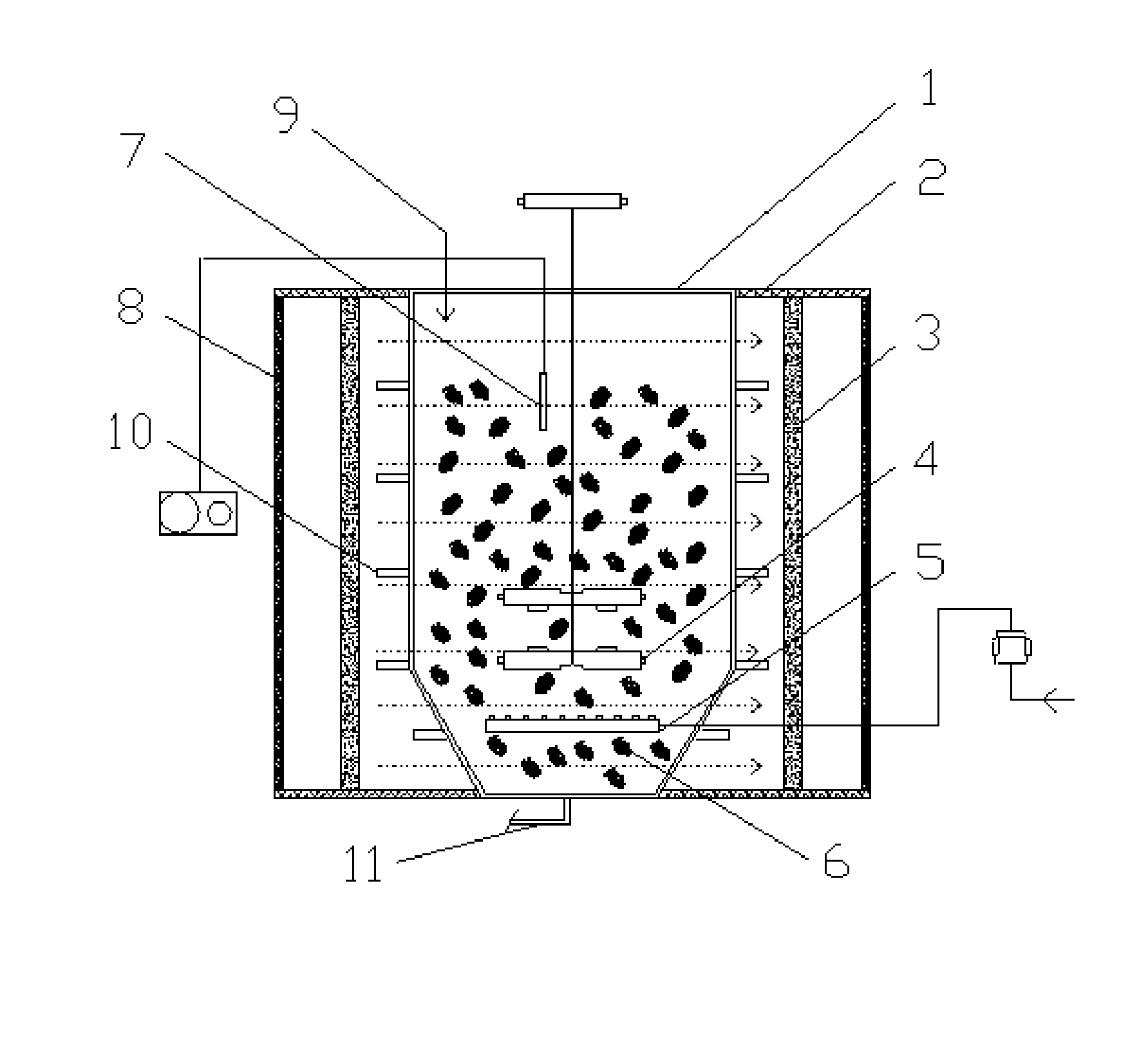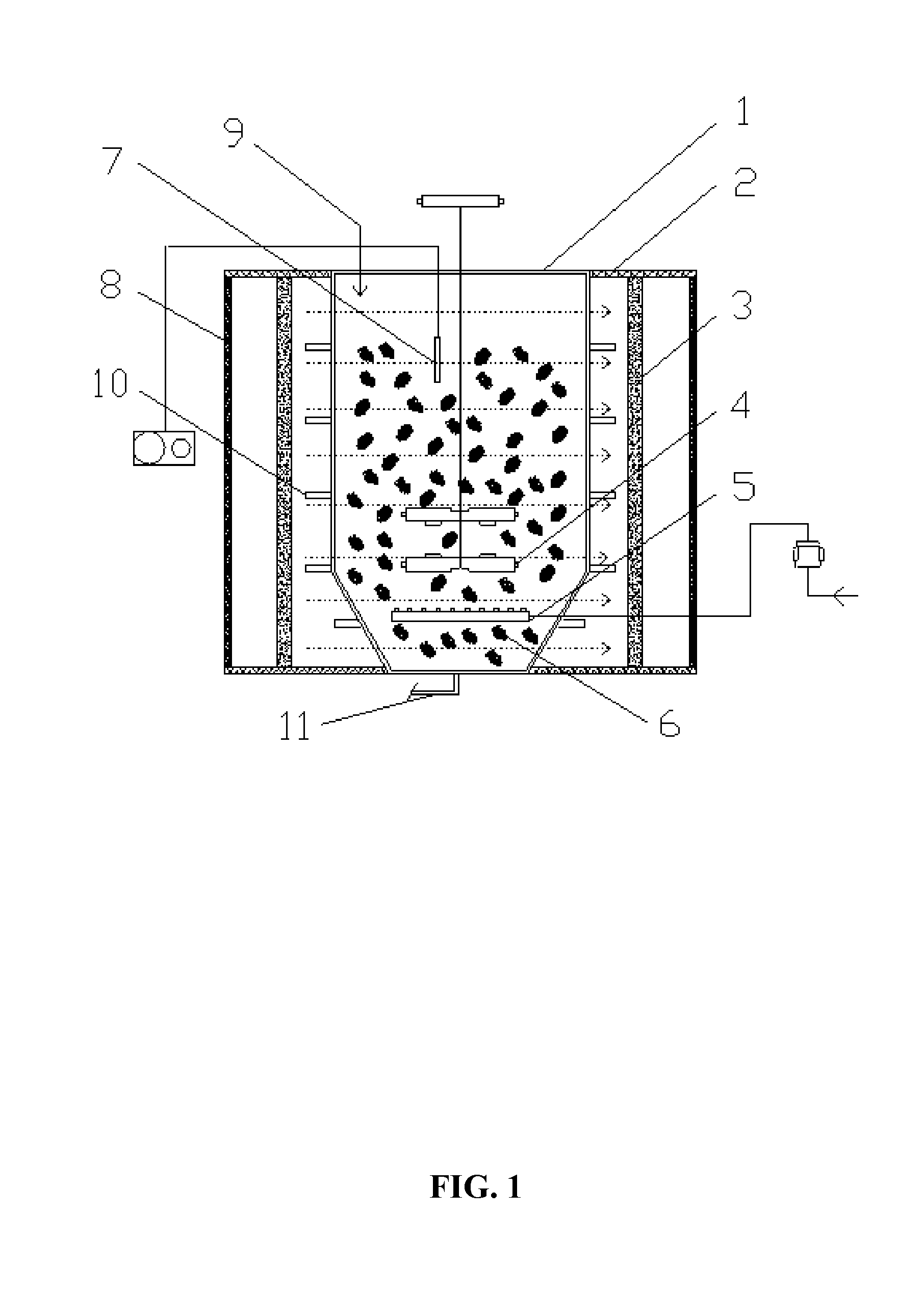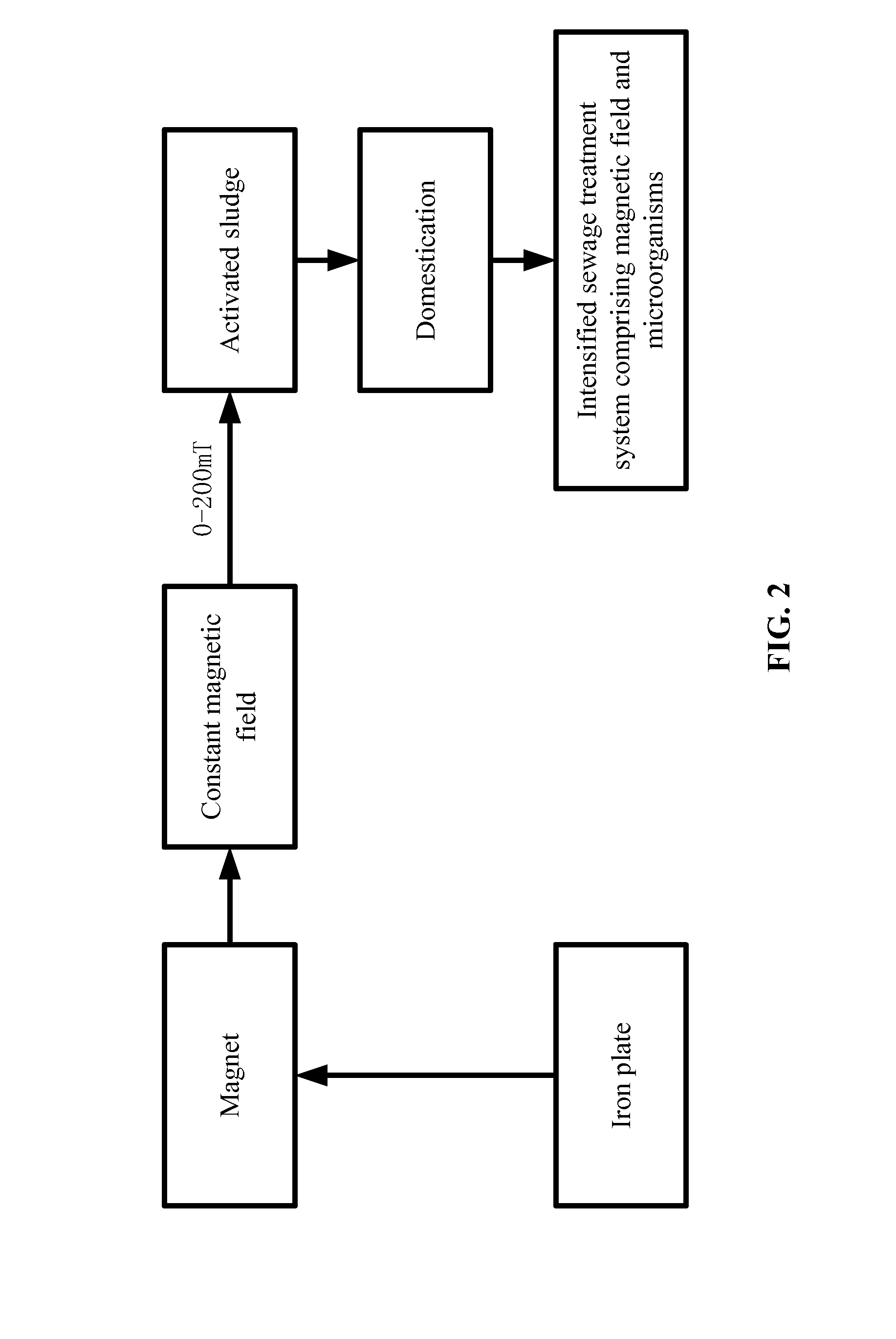Device and method for sewage treatment using constant magnetic field
a magnetic field and sewage treatment technology, applied in the direction of biological water/sewage treatment, water treatment parameter control, sustainable biological treatment, etc., can solve the problems of low efficiency of sewage treatment plant in winter, affecting mass transfer efficiency, and the effect of the above two methods cannot meet the standard requirements, so as to improve the activity of microorganisms, improve the mass transfer rate, and improve the effect of mass transfer
- Summary
- Abstract
- Description
- Claims
- Application Information
AI Technical Summary
Benefits of technology
Problems solved by technology
Method used
Image
Examples
example 1
[0032]As shown in FIGS. 1-2, a sewage treatment plant employed a domestic sewage treatment process comprising the following steps:
[0033]a) A reactor 1 having a ratio of height:length:width=2:1:1 was provided. The reactor comprised an activated sludge zone 6, a stirrer 4, an aerator 5, an upper end comprising a water inlet 9, a side wall comprising a water outlet 10, and a bottom comprising a sludge outlet 11. The activated sludge was inoculated at the temperature of 4° C. The activated sludge zone 6 was disposed inside the reactor 1. The stirrer 4 and the aerator 5 were arranged inside the activated sludge zone 6, and the aerator 5 was arranged beneath the stirrer 4. Two ferrite magnets 3 were arranged in parallel on two sides of the reactor 1, an area of each of the ferrite magnets 3 was adjusted to allow the activated sludge zone 6 to be within a range of the magnetic field. Two iron plates 8 having a thickness of 25 mm were arranged outside the ferrite magnets 3, respectively, fo...
example 2
[0038]As shown in FIGS. 1-2, a sewage treatment plant employed a sewage treatment process comprising the following steps:
[0039]a) A reactor 1 having a ratio of height:length:width=4:2:1 was provided. A bottom of the reactor 1 was in a shape of a rectangular. The reactor comprised an activated sludge zone 6, a stirrer 4, an aerator 5, an upper end comprising a water inlet 9, a side wall comprising a water outlet 10, and a bottom comprising a sludge outlet 11. The activated sludge zone 6 was disposed inside the reactor. The stirrer 4 and the aerator 5 were arranged inside the activated sludge zone 6, and the aerator 5 was arranged beneath the stirrer 4. Two ferrite magnets 3 were arranged in parallel on two sides of the reactor 1, an area of each of the ferrite magnets 3 was adjusted to allow the activated sludge zone 6 be within a range of the magnetic field. Two iron plates 8 having a thickness of 50 mm were arranged outside the ferrite magnets 3, respectively, for weakening the mag...
example 3
[0044]The structure of the device for sewage treatment of Example 3 was the same as that in Example 1, except that the magnetic field intensity of the center of the reactor was controlled at 100 mT. The process for sewage treatment comprised the following steps:
[0045]a) At a temperature of 10° C., an activated sludge was filled inside the reactor 1 to form the activated sludge zone 6 in the bottom of the reactor 1. Two magnets 3 was mounted in parallel on two side of the reactor 1 for allowing the magnets 3 to form magnetic fields having the same direction in the reactor 1. An area of each magnet 3 was adjusted to allow the activated sludge zone to be within ranges of the magnetic fields; and iron plates were mounted outside corresponding magnets 3.
[0046]b) A simulated sewage was introduced into the reactor 1. A concentration of the simulated sewage was gradually increased so as to increase an organic load from 0.03 kg / (m3·d) to 0.5 kg / (m3·d) at a constant gradient. Thereafter, the ...
PUM
| Property | Measurement | Unit |
|---|---|---|
| temperature | aaaaa | aaaaa |
| temperature | aaaaa | aaaaa |
| temperature | aaaaa | aaaaa |
Abstract
Description
Claims
Application Information
 Login to View More
Login to View More - R&D
- Intellectual Property
- Life Sciences
- Materials
- Tech Scout
- Unparalleled Data Quality
- Higher Quality Content
- 60% Fewer Hallucinations
Browse by: Latest US Patents, China's latest patents, Technical Efficacy Thesaurus, Application Domain, Technology Topic, Popular Technical Reports.
© 2025 PatSnap. All rights reserved.Legal|Privacy policy|Modern Slavery Act Transparency Statement|Sitemap|About US| Contact US: help@patsnap.com



